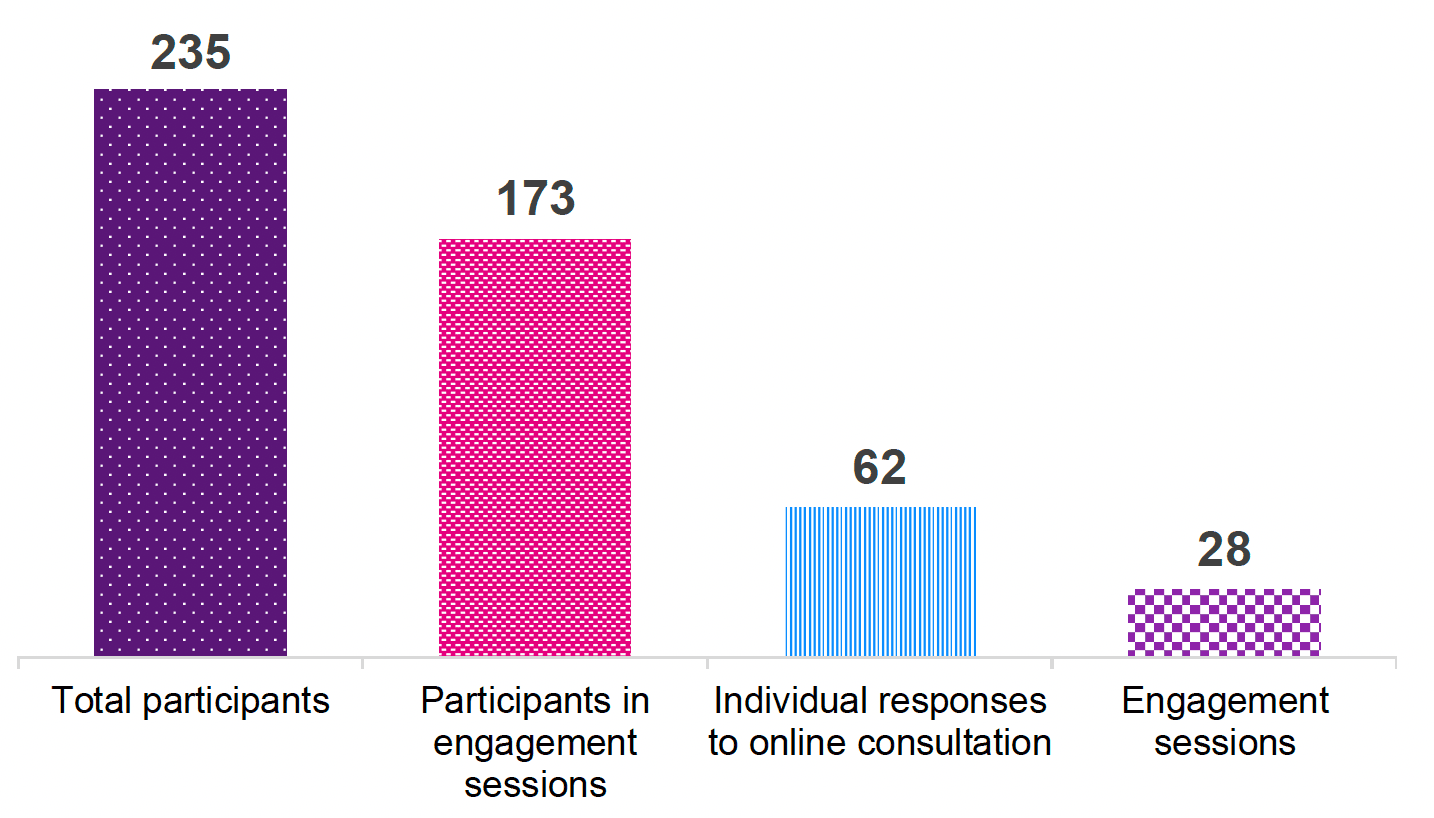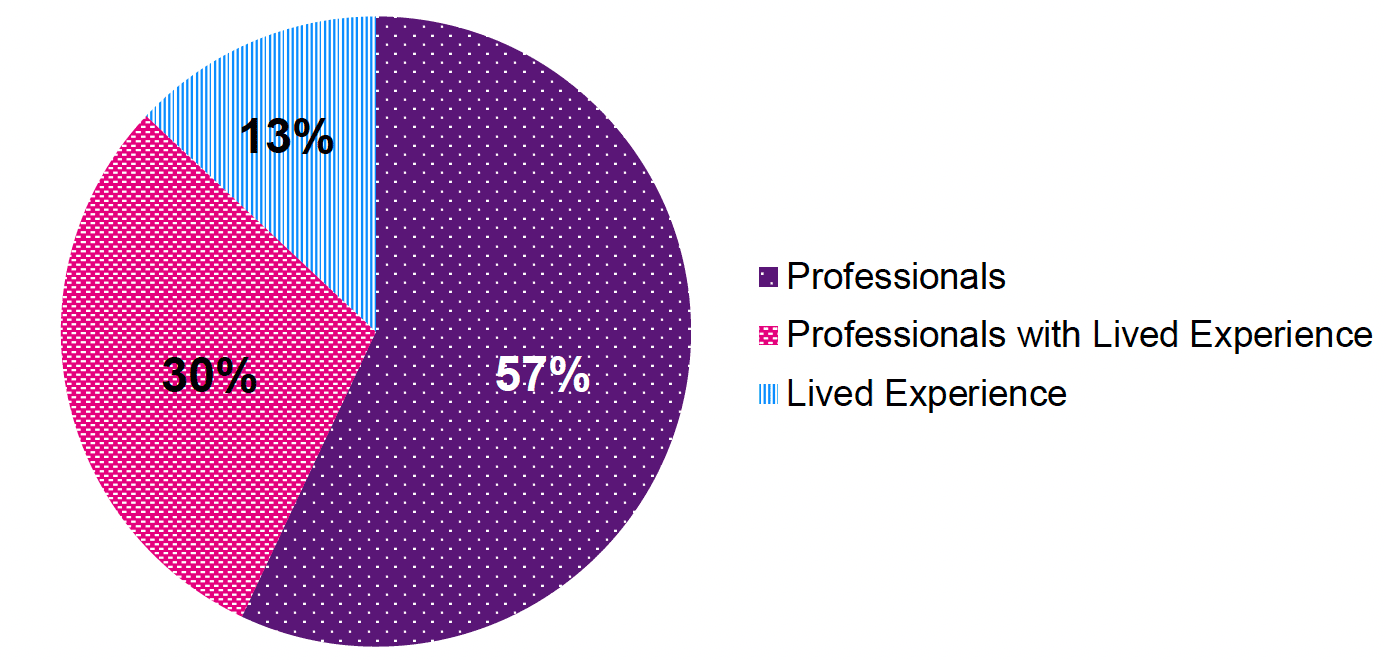Domestic homicide reviews: consultation analysis
We undertook a period of consultation and targeted engagement to inform the development of a Domestic Homicide Review model for Scotland. Those with lived experience of domestic abuse and those working in the field shared their views on fundamental aspects of the model.
Introduction
Domestic Homicide Reviews aim to learn lessons following a death where domestic abuse is suspected. They aim to ensure a voice is given to those who have died and help to prevent further deaths.
“Implementing the model provides an opportunity for real change – to galvanise a wide range of organisations to engage in a guided and informed model of learning and improvement. It should be strengths-based. A key failure in the historical approach to policy around Domestic Abuse is that everyone is blamed.” Professional respondent
Background
Domestic Homicide Reviews are not about finger pointing or apportioning blame. They are fundamentally about learning in order to identify areas for change and improvement to help prevent future domestic violence, deaths and homicide.
There is no universal definition for what constitutes a ‘domestic homicide’. There is significant variation across different jurisdictions on what is within scope, but as a minimum, all include intimate partner homicide where there has been domestic abuse. However, the majority of jurisdictions go further and include a wider definition, such as children.
It should be highlighted that ‘domestic homicide’ does not necessarily mean ‘domestic abuse’ and, as such, there can be two different but related legal definitions. In considering what domestic homicide means in a Scottish context, it is important to be cognisant of the definition of domestic abuse which is set out within the Domestic Abuse (Scotland) Act 2018[1]. In establishing what a domestic homicide is and, in turn, a Domestic Homicide Review, it is key that the two terms are explicitly defined in order to ensure clarity for all.
The development of a Domestic Homicide Review model is a commitment within the Equally Safe Delivery Plan, co-owned by COSLA and Scottish Government. This was further strengthened in the Scottish Government’s 2023-24 Programme for Government. To deliver on this commitment, a Domestic Homicide Review Taskforce was established in December 2022. The purpose of the Taskforce is to provide national leadership and drive forward change and improvement through the development and implementation of a national Domestic Homicide Review model for Scotland. This undertaking will be cognisant of existing processes and reflective of the operating context in Scotland.
In line with the scope of Domestic Homicide Review models within wider jurisdictions across the UK and internationally[2], Taskforce members unanimously agreed that the Scottish model will include victims killed by a partner or ex-partner (this includes adolescents in an intimate relationship). However, in order to develop an evidence-based model for Scotland, a greater understanding was required of what should be included within the scope, as well as a range of other fundamental aspects of the model.
At this stage it should be highlighted that domestic homicide is a gendered crime and the majority of domestic homicides are carried out by men against women. However, whilst acknowledging this, there are also male victims of domestic homicide. As such, the model developed in Scotland will include victims of all genders.
Purpose and Target Audience
In order to inform the development of a national Domestic Homicide Review model for Scotland, the Scottish Government launched an online consultation on Friday, 1st of September 2023, which closed on Monday, 30th of October 2023. The online consultation was complemented by a programme of virtual or in-person targeted engagement sessions as an alternative means for individuals to participate. Input was sought from targeted groups to ensure that people have the opportunity to inform, influence, and contribute to the development of the model.
The online consultation and targeted engagement sessions focused on obtaining the views of:
- people (those 18 years of age and over) who have lived experience of domestic abuse;
- people who have been bereaved due to domestic homicide/ abuse;
- people working in the field of domestic abuse, for example, the police, victim support organisations, social services, health services; and
- people with lived experience who also work in the field of domestic abuse
Overview of the Consultation
The online consultation asked questions about what the Domestic Homicide Review model should look like. Participants had the opportunity to respond to the consultation online or as a hard copy. The online consultation was set up in Qualtrics XM, an experience management platform. No identifying information was recorded for any response, making all responses completely anonymous. In the case of organisational responses, where organisations chose to be mentioned as having participated, those organisations are listed at Annex A. However, organisational responses have been analysed as a whole with no data attributable to any organisation.
The consultation comprised of six sections, with a total of 33 questions, 27 of which were relevant both to those with lived experience of domestic abuse. There were an additional six questions, including a specific section on ‘Information Gathering and Analysis’, relevant to those working in the field of domestic abuse and professionals who also have lived experience.
Participants had the option to pause, skip questions and return at a later date should they wish to do so. Participants were made aware that they could answer as many questions as they chose to. Responses with a 13% completion rate and above were included in the analysis. A breakdown of the consultation and targeted engagement responses is provided in Figure (1) and Figure (2).
There were a total of 235 responses, including 31 (13%) individuals with lived experience of domestic abuse or bereaved by abuse, 134 (57%) professionals working in the field of domestic abuse, and 70 (30%) professionals with lived experience working in the field of domestic abuse. Of the 235 responses, 173 (74%) participants took part in one of the 28 engagement sessions that were organised, and 62 (26%) by answering individually to the online consultation.
The sectors represented in the targeted engagement include social services, health, third sector, justice, housing, education, children’s services, victim support organisations, and local authorities. There were 35 organisational responses.
Engagement Sessions
The online consultation and the engagement sessions covered the same questions, and all responses were fed into the online portal (Qualtrics XM). The final data was downloaded into SPSS (Statistical Package for the Social Sciences) for cleaning and analysis. As part of the consultation, and to enable organisations to self-facilitate engagement sessions, an engagement pack was produced by the Domestic Homicide Review Policy Team within Scottish Government. Feedback was sought from a number of victim support organisations, those with lived experience, health services and analytical colleagues. A list of organisations that facilitated engagement session can be found at Annex A.
Overall Responses
A response overview can be seen in Figure (1). It is acknowledged that the sample is not representative of all professionals in Scotland or those with lived experience of domestic abuse and/ or domestic homicide. The representation of all the sectors who responded to the consultation and the frequency of their representation can be found at Annex A.


Report Structure
The report covers six main sections as outlined below. These are all the questions that were asked during the consultation and targeted engagement:
A) Which Cases will be Reviewed (16 questions)
B) Families and Friends' Involvement (four questions)
C) Perpetrators’ Involvement (four questions)
D) Information Gathering and Analysis (three questions)
E) Reporting and Learning (four questions)
F) Underpinning Scotland’s Domestic Homicide Review Model (two questions)
Contact
Email: dhrmodel@gov.scot
There is a problem
Thanks for your feedback